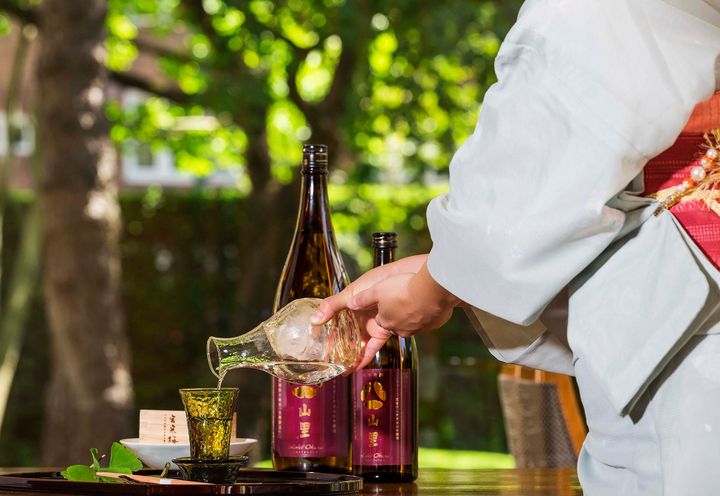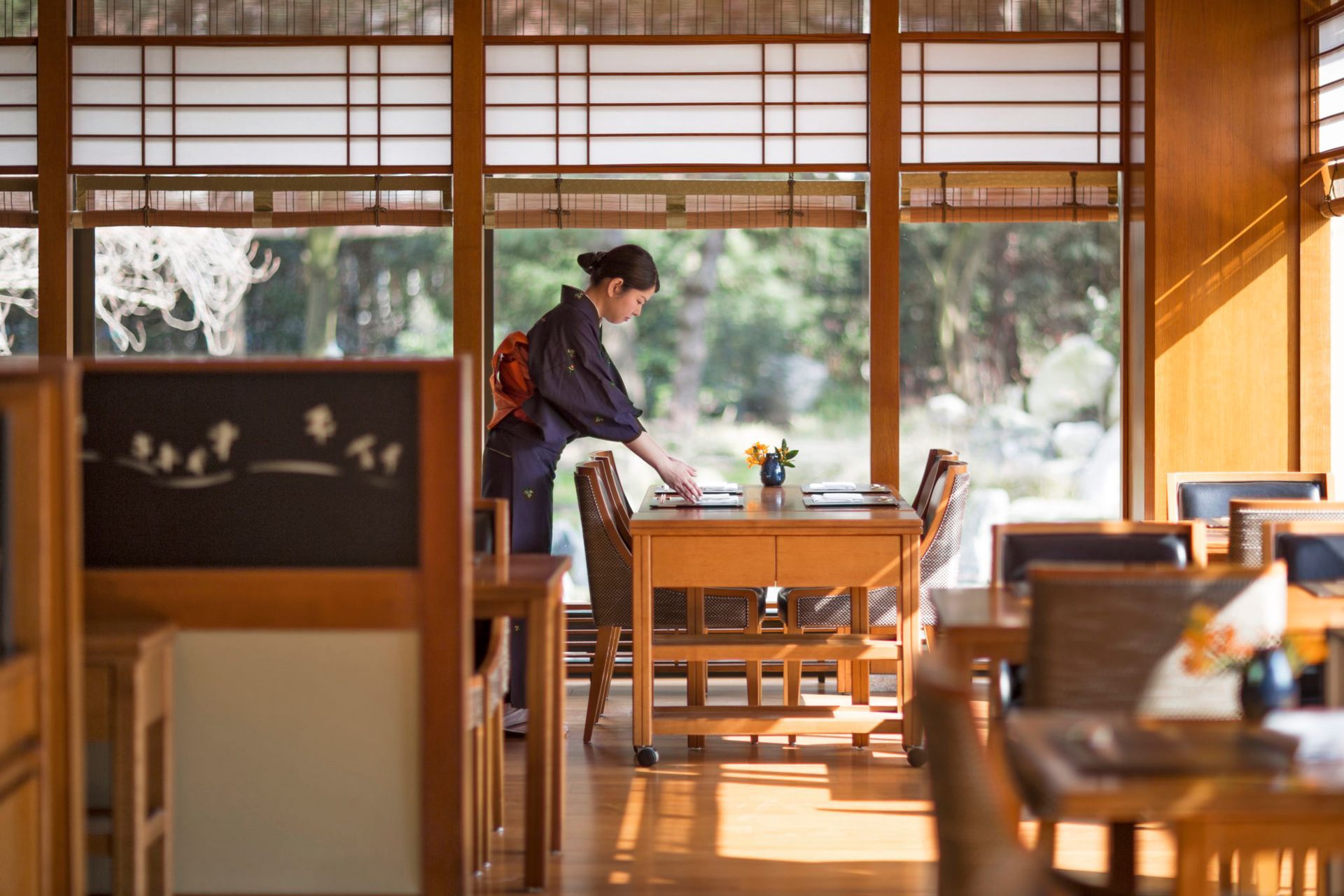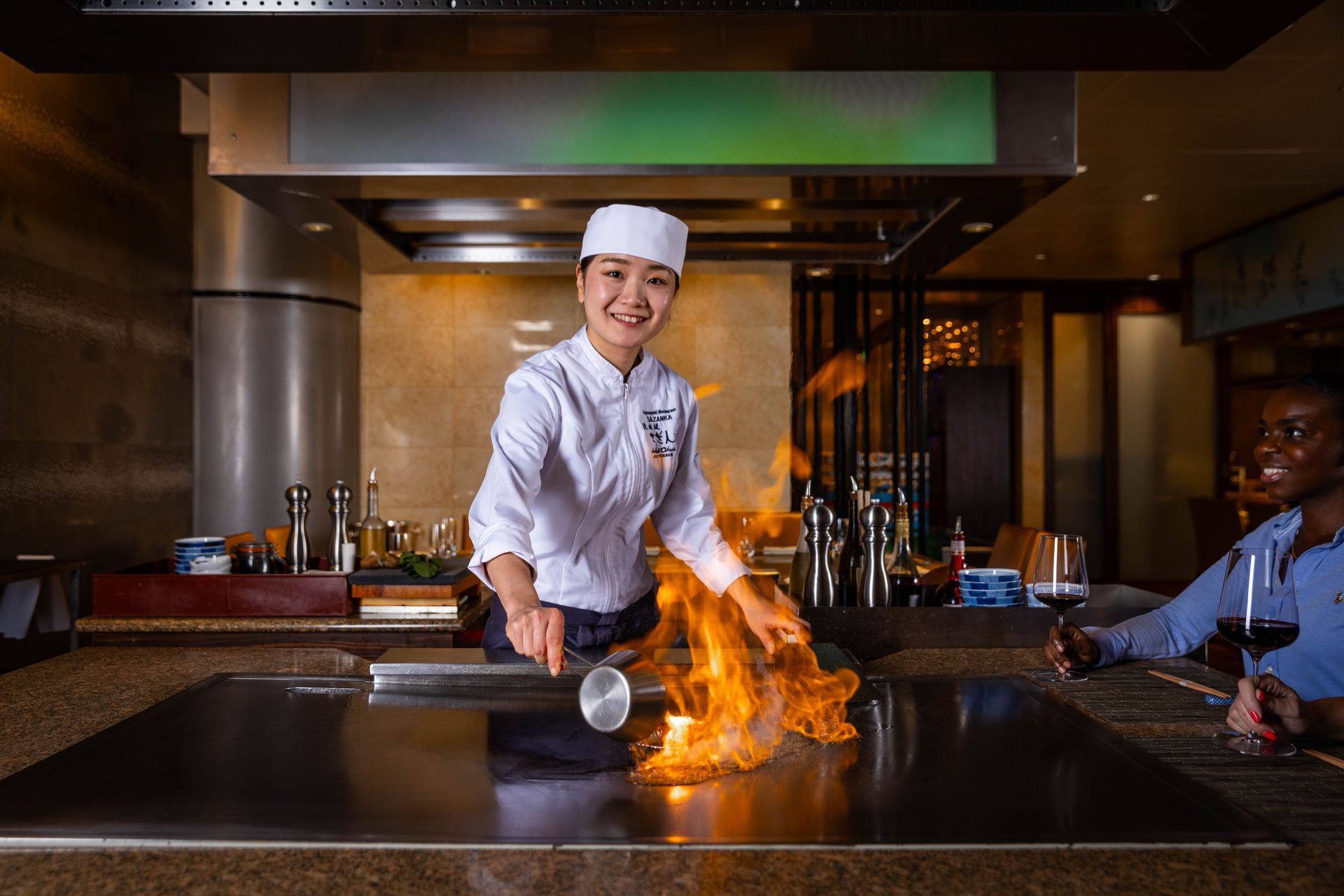EXPERIENCE THE EXQUISITE
Best Value Guarantee
Flexible Booking Conditions
Loyalty Programs
Tailored Experiences
Best Value Guarantee, Flexible booking Conditions, Exclusive Benefits, Tailored Experience

Travelers' Choice Best of the Best
2024

Readers' Choice Award
2024

Three Michelin Stars and a
Bib Gourmand across three restaurants

Travelers' Choice Best of the Best
2024

Readers' Choice Award
2024

Three Michelin Stars across two restaurants
LUXURY & ELEGANCE REFINED

Welcome to Hotel Okura Amsterdam, where Eastern and Western influences meet in perfect harmony. Rooted in the philosophy of Japanese service, Omotenashi, we offer peaceful luxury in Amsterdam.
As a distinguished member of The Leading Hotels of the World, we are situated in the vibrant Amsterdam Zuid neighbourhood of De Pijp, only steps away from The Rijksmuseum.
Our spacious rooms and suites offer perfect views of the Amsterdam skyline. We are proud to be home to four acclaimed restaurants, collectively holding three Michelin stars.


ROOMS & SUITES
Experience refined luxury and comfort in our elegantly designed rooms and suites, offering spectacular views and modern amenities.
CIEL BLEU'S REFINEd NIGHTS
Ciel Bleu Restaurant introduces Ciel Bleu’s Refined Nights, a series of exclusive culinary evenings dedicated to extraordinary ingredients.

SAKE WORKSHOP
Taste the world of sake. Discover six exquisite types of sake paired with artisanal chocolates from our pastry shop and carefully selected cheeses.

LEADER'S CLUB OFFER
As a member of The Leading Hotels of the World, enjoy a benefit up to 25% on room stays, along with daily breakfast for two and room upgrades.
CULINARY EXCELLENCE

Ciel Bleu Restaurant
Indulge in a two Michelin-starred dining experience, offering an unforgettable gastronomic journey with breathtaking views of Amsterdam.

Yamazato Restaurant
The first traditional Japanese restaurant in Europe to be awarded a Michelin Star. Offering authentic Japanese haute cuisine in a traditional setting.

Teppanyaki Restaurant Sazanka
Experience live cooking with Japanese precision. Teppanyaki chefs prepare your dish with top-quality ingredients right at your table.
Serre Restaurant
Discover casual dining at Serre and enjoy an international menu available all day. Recognised by Michelin with a Bib Gourmand, Serre prides itself on providing quality cuisine at excellent prices.
Twenty Third Bar
Enjoy crafted cocktails and breathtaking views at the Twenty Third Bar. With the spectacular view over Amsterdam at 78 meter height.
Lobby Bar
Step into the glamour of the 1920s in our Lobby Bar, where you can enjoy an aperitif before dinner or unwind with colleagues after a productive working day.
Le Camelia
Savour a delightful breakfast experience at Le Camelia, offering a variety of fresh and flavourful dishes to start your day.
Ciel Bleu Restaurant
Indulge in a two Michelin-starred dining experience, offering an unforgettable gastronomic journey with breathtaking views of Amsterdam.
Yamazato Restaurant
The first traditional Japanese restaurant in Europe to be awarded a Michelin Star. Offering authentic Japanese haute cuisine in a traditional setting.
Highlights
EXPLORE
AMSTERDAM STAY
Hotel Okura Amsterdam is located in the lively De Pijp neighbourhood, a prime location close to many of the city’s most beloved attractions. Within walking distance, you will find the Rijksmuseum and Van Gogh Museum, offering a glimpse into Amsterdam's rich cultural history. The vibrant Albert Cuyp Market and scenic Vondelpark are also nearby, making it easy to explore the city’s charming streets and famous canals right from the hotel’s doorstep.

LOCATION
ACCESS
TRANSPORT LINKS
Hotel Okura Amsterdam's convenient location offers excellent connections to the city's main transportation hubs. Schiphol Airport is only a 15-minute drive away, while a nearby tram and metro station provide swift access to Amsterdam Central Station. Whether travelling by car, public transport, or bicycle, guests will appreciate the hotel’s accessible location, making it effortless to reach both the city's key sights and surrounding areas.

Located on the outskirts of the trendy De Pijp neighborhood, lined with cafés, bookstores and wine bars, the serene Hotel Okura occupies a 23-story building overlooking it all.
This Japanese-owned property dishes out exceptional Asian hospitality with warm, attentive service and zen-like calm; its location in one of the city’s only high-rise buildings also lends itself to ravishing panoramic views.
Travelers seeking a winning combination of a great neighborhood, superb on-site dining options (three of the four on-site restaurants at Hotel Okura—Ciel Blue, Yamazato and Sazanka—are Michelin-starred) and a sublime spa experience will be more than delighted by the many offerings found here.

By the standards of skyscrapers, 23 floors isn’t all that much — but even the modest Hotel Okura Amsterdam positively towers above its surroundings in the low-rise district of De Pijp, situated just to the south of the city center. It’s a vibrant and ever-evolving neighborhood, full of excellent restaurants and other expressions of urban creativity, and it’s home to an unusual hotel, one that’s Japanese not only in name but in its aesthetic as well.
This is most apparent in the public spaces, which are soothingly minimalist in a way that recalls Tokyo’s finer luxury hotels; it’s also apparent in the service, which also recall Tokyo’s finer luxury hotels in its ubiquitousness and professionalism.
Relaxed, understated luxury with a quiet Japanese design undercurrent, evidenced in beautiful woods, clean lines and clear light. It’s a large hotel, with a lot going on, but soft colours and enveloping wooden armchairs in the vast lobby absorb the bustle and assert a zen-like calm.
A bulging bushel of restaurants boast three Michelin stars and a Bib Gourmand between them. Ciel Bleu on the 23rd floor (widely spaced tables, all-encompassing views), under executive chef Arjan Speelman and his rising-star chef de cuisine Mike Klaassen, notches up two of those stars with delicate flavour combinations.
Located on the outskirts of the trendy De Pijp neighborhood, lined with cafés, bookstores and wine bars, the serene Hotel Okura occupies a 23-story building overlooking it all.
This Japanese-owned property dishes out exceptional Asian hospitality with warm, attentive service and zen-like calm; its location in one of the city’s only high-rise buildings also lends itself to ravishing panoramic views.
Travelers seeking a winning combination of a great neighborhood, superb on-site dining options (three of the four on-site restaurants at Hotel Okura—Ciel Blue, Yamazato and Sazanka—are Michelin-starred) and a sublime spa experience will be more than delighted by the many offerings found here.
By the standards of skyscrapers, 23 floors isn’t all that much — but even the modest Hotel Okura Amsterdam positively towers above its surroundings in the low-rise district of De Pijp, situated just to the south of the city center. It’s a vibrant and ever-evolving neighborhood, full of excellent restaurants and other expressions of urban creativity, and it’s home to an unusual hotel, one that’s Japanese not only in name but in its aesthetic as well.
This is most apparent in the public spaces, which are soothingly minimalist in a way that recalls Tokyo’s finer luxury hotels; it’s also apparent in the service, which also recall Tokyo’s finer luxury hotels in its ubiquitousness and professionalism.
CHOOSE YOUR OFFER
EXCLUSIVE HOTEL OFFERS
CULINARY EXPERIENCE
Indulge in our culinary experiences by combining dinner at one of our
Michelin-starred restaurants with a luxurious overnight stay.
FAMILY
EXPERIENCE
Enjoy an exquisite family getaway in Amsterdam. Our spacious rooms, fitted with king-size beds and soft, fresh linen, are ideal for unwinding after an adventurous day.
DESIGNER EXPERIENCE
For those seeking an exceptional experience that combines creativity with luxury, we offer the exclusive opportunity of designing your own personalised, bespoke clutch handbag.














































































































